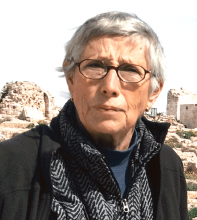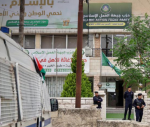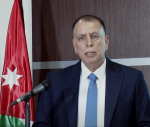You are here
Reemergence of the morality police
Jul 19,2023 - Last updated at Jul 19,2023
Iran’s morality police have resumed foot and vehicle patrols with the aim of enforcing the clerical government’s mandatory headscarf/hijab codes. This police unit’s activities had been suspended since last year’s nation-wide protests put an end to its interventions. This was precipitated by the arrest and death in custody of a young Iranian Kurdish woman, Mahsa Amini,for “improper hijab”. While protesters adopted the slogan, “Woman, Life, Freedom”, men joined women in raising the banner of revolt. Professional, trades, and workers unions harnessed their other grievances against the clerics to the women’s demonstrations during which more than 500 people were killed and 20,000 arrested. At least seven men have been executed for their involvement in violence during the protests and dozens more are in jail and being investigated.
Since protests abated after a dramatic and deadly 10 months, the ruling conservatives have reasserted their grip on Iranian womankind and their male supporters by installing surveillance cameras in popular locations to identify hijab violators and resisters and warned, sent to reeducation centres, or prosecuted alleged violators, depending on the seriousness of the offense. Hijab less women found in vehicles have had their cars impounded. Cafes, restaurants, and shops in malls serving women defying the hijab mandate have been fined or closed down. Women without headscarves have been denied entry to universities. Men who do not dress in accordance with the clerics’ orders could also be detained and prosecuted.
A draft law under discussion in parliament is seen as too lax by hardline conservatives and too harsh by pragmatic liberals who argue that the reversion to police patrols will alienate women and girls and their male alliess. In response to the renewal of morality police patrols, protests erupted the northern Iranian city of Rasht during an attempt arrest three women over hijab violations.
Amwaj media quoted reformist commentator Ahmad Zeidabadi as saying that the Islamic Republic had to choose between accepting the hijab is optional or impose it at an “unfathomable cost”. He warned that if the authorities insist on “enforcing the hijab, they may have to resort to hanging women who do not cover their hair”.
In response to the unrest, the authorities pledged dialogue but instead went ahead with their agenda. Unfortunately, the clerics have made the hijab a pillar of their rule. The hijab and the enveloping black cloak, the chador, became symbols the 1978-79 popular revolt against the shah. His “White Revolution” had freed women from oppressive male dominance, head coverings, and conservative dress and promoted women’s education and advancement before the society was prepared for a major change. conservatives prospered by social discontents .
It has been 44 years, nearly two generations since the Iranian Islamic Revolution ousted the Shah. The clerics reversed the Shah’s progressive policies benefiting women and dictated their dress, demeanour, education, and relationships with men. However, they also undermined this backward shift by providing millions of women with education. Before the revolution, it was middle class women, an estimated 3 per cent, who received secondary and higher education. After the revolution, conservative families sent their daughters to universities. This created major sociocultural changes.
Currently women account for 60 per cent of university students. While women struggle to find jobs, female engineers and scientists have entered previously male-only professions. Iranian women are leaving home to attend university, gaining social freedom, taking jobs and postponing marriage.
Conservatives have been openly challenged over hijab by modern-minded liberals. The most notable among them is former president Mohammed Khatami (1997-2005) who, during his two terms in office, not only fought to abandon “backward” practices but also to secure rapprochement with the West and the wider world. He failed due to US demonisation, ostracism, and sanctions. This policy enabled the conservatives to assert themselves and impose their agenda.
Khatami stated, “Islam should respond to the needs of the modern world” rather enforce behaviour of bygone days. Khatami insisted that “women need to be respected if we wish to move towards a better future”. He held that there should be “no difference between men and women in terms of freedom and dignity... [so] there will be no limit to our growth”.
The conservative clerics also face serious global challenges. Iran is not an island cut off from the mainland of humankind. The rapidly changing world has intruded on Iran via radio, television, films, the internet, and social media. Mahsa Amini’s name, face, and tragic fate are known round the world. Every time an Iranian woman without “correct hijab” is stopped, threatened, arrested, and punished, Iranians recall and reproach Amini’s death while the world awaits to see if they will resume “Woman, Freedom, Life” protests.













